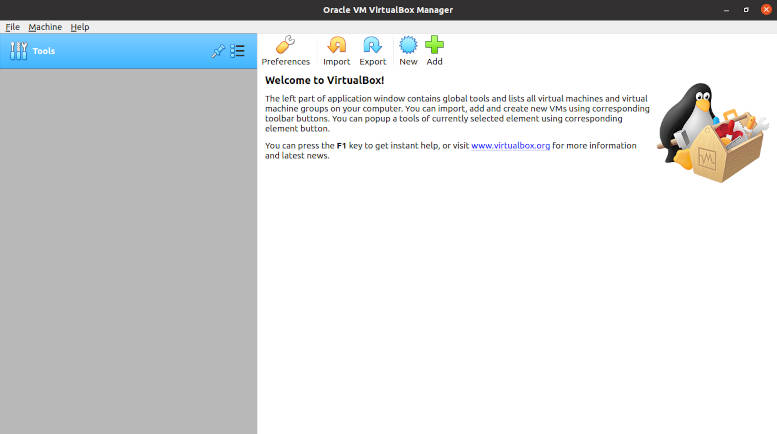
- #HOW TO INSTALL VIRTUALBOX WITHOUT GUI HOW TO#
- #HOW TO INSTALL VIRTUALBOX WITHOUT GUI FULL#
- #HOW TO INSTALL VIRTUALBOX WITHOUT GUI SOFTWARE#
What about UTM - based on QEMU? VM applications - Parallels, VMWare, Virtualbox etc.

#HOW TO INSTALL VIRTUALBOX WITHOUT GUI SOFTWARE#
Or when you don't want to use Apple software because of the terms you have to accept to use it. Virtualisation is another example where non-Apple options can be better than Apple's as Apple would prefer that you do everything on their OS than use alternate ones. (You may trust the Apple codebase on which all Application firewalls on macOS are forced to run, but what if I don't and want alternative? And if you say, "Then don't use macOS", note that's a very anti-consumer view and is toss to everyone's consumer rights). Application firewalls is an example, because they can also prevent Apple software and services from data-mining a users personal data.

Which is all ok till you consider that experienced developers that make good system software can offer better software than Apple, which often may have no incentive to support softwares that isn't aligned with their business interest. > I'd rather trust just Apple on kernel-space (which I have to anyway, as they make the kernel), than Apple + any random third party software that wants to run as a kernel extension. But completely taking away my choice as user to customise my OS with kernel extensions, and reducing my choices (as a customer) by taking away the ability of developers to offer a non-Apple custom software solution that is better is also obviously anti-consumer. If an application that used a kernel extension made my system unstable or crashed it, I obviously wouldn't use it and will uninstall it. I personally have been using some of these applications that install custom kernel extension, and my macOS (3 versions of macOS over a period of a few years) has never crashed or become unstable because of them, so far. Even more so when you consider that a developer will now have to rely on Apple to fix bugs or add new features - which Apple may have no inclination to do so so if it feels it isn't aligned to their own business interest (thus anti-competitive).
#HOW TO INSTALL VIRTUALBOX WITHOUT GUI FULL#
Especially when we consider how such a move is also anti-competitive and anti-consumer, and thus helps Apple's business.įorcing developers to make an expensive migration from their own tried-and-tested and stable codebase over which they have full control, to use Apple's OS API's is a developer hostile move. Their popularity, and relative stability of the kernel extensions these applications used, is proof that Apple's black and white approach of "all non-Apple kernel extensions are bad" is rubbish. To clarify - I was specifically talking about existing application firewalls and VM applications for macOS that use / used kernel extensions and already have a large userbase on macOS. That's a misunderstanding of what I was trying to convey. > but your claim that third-party software worked fine without issues is factually incorrect. In the early days, the implementations between AMD and Intel were so different that you often needed specific builds for one or the other implementations, and you couldn't have both loaded at the same time (even if just 1 active and every other implementation inactive). On macOS there were essentially two low-level implementations, one for ARM and one for Intel, and a higher-level abstraction, amework, that lets you simply "create" virtual machine instances, which then make use of the various virtualisation features depending on the underlying hardware.
#HOW TO INSTALL VIRTUALBOX WITHOUT GUI HOW TO#
So if you have libvirt, you have a high-level abstraction for multiple hypervisors (like KVM and Xen) which in turn know how to interact with various hardware implementations to actually have it act the way we want it. Then you get some higher level abstractions that allow you to use a virtualisation interface to make use of the system without having to re-invent that interface every time some new hardware gets released. Even a type-1 hypervisor like Xen would need to know a bit about the specifics of the hardware to know what features exist and how to use them.

but you need a different software implementation to make use of it, even if only to use the different ISA and setup procedures.Įven within the same architecture you might need different low-level interfacing software to make use of it. Similar in functionality, different in implementation.


 0 kommentar(er)
0 kommentar(er)
